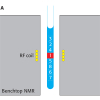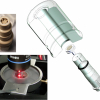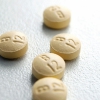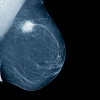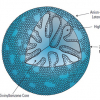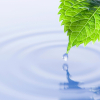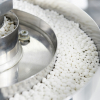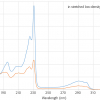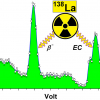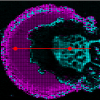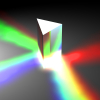Articles
This article describes a clever adaptation to benchtop NMR experiments that allows the collection of multiple scans (to produce high signal-to-noise ratios) without the time penalties involved.
Cultural heritage is a growing application area for spectroscopy, and our second article describes how infrared and X-ray spectroscopy are being used to explore the coatings used by the old Cremonese makers that produced such outstanding sound.
Mike Sargent gives an overview of traceability in atomic spectroscopy. He explains the background, as well as more specialised areas such as inductively-coupled plasma mass spectrometry (ICP-MS).
Mark McDowall, Meetings Secretary of The British Mass Spectrometry Societ,y explains how the society coped with the restrictions of COVID and what his views are for the future of events.
How did a major trade show organiser cope with the disruption of COVID-19? Susanne Grödl, Exhibition Director of analytica for Messe München, gives her experience.
A look at recent advances in the use of Raman spectroscopy in the nuclear industry.
Over the last two decades, significant advances in technology and new methodologies have made proteomics an extremely powerful tool for protein scientists, biologists and clinical researchers. Increase in the data produced also creates new challenges for bioinformatics software development.
This article sets out to demonstrate the accurate determination of elemental impurities, especially As, in vitamin B12 according to USP chapter <233>.
This article reports the use of near infrared (NIR) spectroscopy for the diagnosis of human breast cancer using tissue sections similar to those used by pathologists.
For the separation of ionic species, ion chromatography (IC), a type of liquid chromatography, is the method of choice. The most critical component of this technique is the separation column, which is selected based on factors that include the specific analytes of interest, the sample type and the required detection levels. This article outlines the column parameters that impact the separation of charged species in solution using ion-exchange chromatography and the developments that have continued to redefine what is possible with an IC system.
With a wide range of concentrations of elements in potable waters, their accurate determination is difficult with ICP-MS. It is possible, using a cell-based instrument, to “tune” the signal sensitivity of particular elements and so keep all them within the dynamic range of the instrument.
The ICH Harmonised Guideline for Elemental Impurities of drug products specifies limits on the residual amounts of 24 elements whose toxicities are of concern. The recommended analytical techniques to achieve this are ICP-MS and ICP-AES, but the regulations allow other methods if they exist. One such method is XRF spectrometry. The method is shown to meet the regulations and is a useful, cost-effective alternative to ICP-MS and ICP-AES.
This work demonstrates the determination of inorganic anions in drinking water by ion chromatography.
The UV/Vis+ Photochemistry Database is a collection of photochemical data and information was started in 1999 and is now an online database updated weekly.
It is difficult to provide practical experience with gamma spectroscopy in undergraduate laboratories, and the authors have been investigating alternative sources, and the 138La isotope is a suitable candidate. As well as some background on gamma spectroscopy and radiochemistry, Marco and Valentina also provide some sample exercises that could be used for undergraduate practicals.
David is concerned about the “Importance of citing full details of spectral library and search program” in papers. As he points out, “even when the same mass spectrum is searched against two different versions of the NIST/EPA/NIH EI Mass Spectral Library using the same search program, two different compounds can be found as the first Hit”. There are many possible reasons for this, but the version of the spectral library used and the particular search program used make a difference, and should be included in all references.
A sponsored article demonstrating the ability of the Thermo Scientific™ iCAP™ PRO Series inductively coupled plasma optical emission spectroscopy instrument to determine trace elements and major components in foodstuffs to comply with regulations.
This article describes a recently introduced, rapid, laser-based hyperspectral method for thin-film analysis in the mid-IR fingerprint range.
FT-IR spectroscopy and ED-XRF are used to determine the origin of contaminants in food that may, or may not, have originated from dental materials.
The latest edition of the European Pharmacopoeia on ultraviolet and visible spectroscopy has become mandatory as of 1 January 2020, so those of you who need to comply with its requirements will find this of particular interest. Nathan and John pick apart the significant changes with a view to their practical application for instrument users. Cells, control of equipment performance, wavelength accuracy, absorbance accuracy, photometric linearity, stray light and resolution, system suitability and reference materials are all covered.

